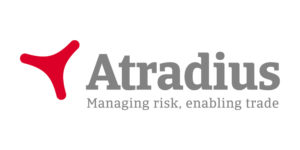Atradius: COVID-19 Crisis Lends Fresh Urgency To MENA Economic Diversification Efforts
The oil-dependent economies of the Middle East and North Africa (MENA) have been dealt a fresh blow by COVID-19, but the region can limit the damage and rejuvenate growth by focusing on fiscal consolidation, technological innovation and economic diversification, according to Atradius’ latest MENA economic report.
Buffeted by geopolitical challenges and a range of social issues, the MENA region — a grouping that includes the Gulf Cooperation Council (GCC) nations — has been further weakened by the pandemic and faces an unprecedented slowdown of -7.0% in 2020, the report notes, arguing that it’s in the countries’ best interests to intensify diversification efforts, which have been underway for some time now, in order to secure long-term growth.
Shakeups in the oil industry have seen traditional oil exporters cede market share to the US shale industry and lose control over the price of oil while a potential easing of sanctions on Iranian oil exports poses another risk, leaving even the most financially robust GCC countries, such as Kuwait, Saudi Arabia, UAE and Qatar, vulnerable and struggling to maintain current living standards for coming generations, according to the report.
As the steady flow of petrodollars — which helps fund government spending and private consumption — has dwindled, it has contributed to widening the persistent twin deficits of the region’s economies. This, in turn, is blunting the policy tools at the disposal of MENA governments and hurting their ability to support other traditional growth engines, such as construction and real estate, which contribute between 10-15% to the GDP of GCC countries, according to the report.
“The twin oil-coronavirus crisis has had a large negative impact on most sectors in the non-oil economy with significant credit risk implications,” noted Schuyler D’Souza, Managing Director Middle East, Atradius. “The IMF in its latest report on the region estimates that the default risk for corporates has doubled and Atradius can confirm that payment performance has deteriorated across the weaker sectors due to falling demand, cash flow constraints and insufficient support from banks.”
Other key findings include:
*In Saudi Arabia, pro-growth policies are expected to revive the construction sector while hydrocarbon investments will underpin growth in the medium term alongside diversification efforts as part of Vision 2030. Local skill shortages coupled with an exodus of expats are key challenges.
*The UAE, one of the most diversified Gulf states, has a promising medium-term outlook. Its protracted recovery will be stimulated by the postponed World Expo, its ability to attract foreign investment, and its status as a renewables pioneer.
*Egypt’s accommodative monetary policy is expected to partially offset a drop in tourism, infrastructure spending will boost construction while new gas finds will enhance exports.
The report forecasts the MENA region will expand by 3.6% in 2021 and 4.0% in 2022 — most of which will be driven by the non-oil sector as oil prices are unlikely to rise significantly in the near future — and identifies the most promising sectors to help drive growth in the region. These include education, information & communication, fintech and pharmaceuticals. Other focus areas are aiding the growth of the manufacturing sector in North Africa and the Middle East’s push for renewables.
“North African economies, specifically Morocco and Tunisia, can build on the ongoing shift to high-tech manufacturing and expansion of their trade networks while the Middle East is well endowed with renewable energy sources and raising funds for renewable energy projects is becoming easier,” noted Niels De Hoog, Senior Economist, Atradius. “These efforts must be taken to the next level because holding on to the current economic model will form an increasing drag on growth.”
Get the Atradius MENA Economic Report here: https://atradius.com.hk/en/publications/economic-research-mena-economic-growth-engine-falters.html







